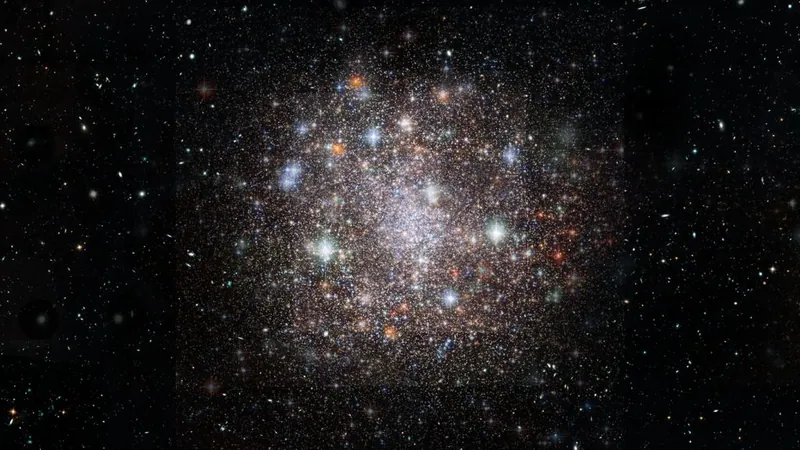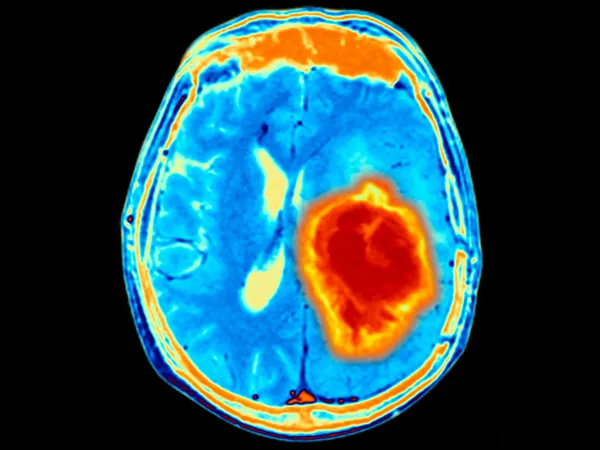
Astronomers Discover a Newborn Super Star Cluster That Could Revolutionize Our Understanding of the Universe!
2025-01-17
Author: Rajesh
Astronomers Discover a Newborn Super Star Cluster That Could Revolutionize Our Understanding of the Universe!
In an astonishing breakthrough for the field of astronomy, researchers have discovered a newly forming super star cluster (SSC) in the Large Magellanic Cloud (LMC), a mere 100,000 years old! This finding, made possible by cutting-edge observations from the James Webb Space Telescope (JWST), offers scientists a unique opportunity to peer back in time and study stellar formation processes that have largely vanished in the modern cosmos.
Six to seven billion years ago, SSCs were the breeding grounds of countless stars; however, such robust stellar nurseries have mostly dissipated in contemporary galaxies. Currently, astronomers can only identify two SSCs within our Milky Way and one in the LMC, each millions of years old. This discovery of a nascent cluster, designated H72.97-69.39, in the LMC not only reignites interest in astronomical formation processes but also helps to illustrate how conditions from the early universe persist today.
The research, recently published in The Astrophysical Journal, led by Omnarayani (Isha) Nayak from NASA’s Goddard Space Flight Center and the Space Telescope Science Institute, highlights significant findings about the environment of H72. The LMC, located approximately 160,000 light-years away and oriented face-on to Earth, provides an ideal vantage point for observations. It contains a sweeping star-forming nebula called N79, which spans 1,600 light-years, where JWST's Mid-Infrared Instrument (MIRI) has identified 97 new young stellar objects (YSOs) associated with the new SSC.
What's increasingly fascinating is that the LMC's metallicity — the abundance of elements heavier than hydrogen and helium — is about half that of our Solar System, suggesting that the conditions for star formation in the nascent H72 are strikingly similar to those that existed in the early universe. This critical detail positions this particular SSC as a living time capsule, allowing astronomers to study the conditions that led to the formation of the first stars billions of years ago.
Isha Nayak emphasized the importance of this discovery, stating, “Studying YSOs in the LMC gives astronomers a front-row seat to witness the birth of stars in a nearby galaxy. For the first time, we can observe individual low-mass protostars forming in groups outside of our Milky Way.
This unique insight into star formation could provide a clear understanding of how massive stars influence the chemistry and structure of the interstellar medium.
The JWST's observations revealed that the YSOs surrounding the SSC are stratified by mass. The densest regions consist of massive young stars, while lesser-mass stars are found on the outskirts. This contradicts previous assumptions that those massive stars were solitary; they are, in fact, part of star clusters. Such revelations underscore the complexity of early star formation and could reshape existing theories about how stars are birthed in our universe.
One exceptional young star identified is more than 500,000 times brighter than our Sun and is surrounded by over 1,550 younger stars. Previous data from the Atacama Large Millimeter/submillimeter Array (ALMA) hinted at a backdrop of colliding gas filaments that may contribute to the formation dynamics of SSCs, bolstering the overall hypotheses surrounding these celestial phenomena.
This incredible discovery illustrates the JWST's groundbreaking capabilities in resolving the intricate processes of star formation in other galaxies. The data garnered from the observations not only refutes long-standing assumptions but also provides insights into chemical complexity, including organic materials, dust, and ice within star-forming regions.
As telescopes like JWST delve deeper into the cosmos, they promise to unveil more secrets of our universe. The formation of H72 is not just a scientific milestone; it poses questions about the birth of stars, the chemistry of the universe, and ultimately, the origins of life as we know it. Keep your telescopes trained on the skies; the universe has much more to reveal!




 Brasil (PT)
Brasil (PT)
 Canada (EN)
Canada (EN)
 Chile (ES)
Chile (ES)
 Česko (CS)
Česko (CS)
 대한민국 (KO)
대한민국 (KO)
 España (ES)
España (ES)
 France (FR)
France (FR)
 Hong Kong (EN)
Hong Kong (EN)
 Italia (IT)
Italia (IT)
 日本 (JA)
日本 (JA)
 Magyarország (HU)
Magyarország (HU)
 Norge (NO)
Norge (NO)
 Polska (PL)
Polska (PL)
 Schweiz (DE)
Schweiz (DE)
 Singapore (EN)
Singapore (EN)
 Sverige (SV)
Sverige (SV)
 Suomi (FI)
Suomi (FI)
 Türkiye (TR)
Türkiye (TR)
 الإمارات العربية المتحدة (AR)
الإمارات العربية المتحدة (AR)